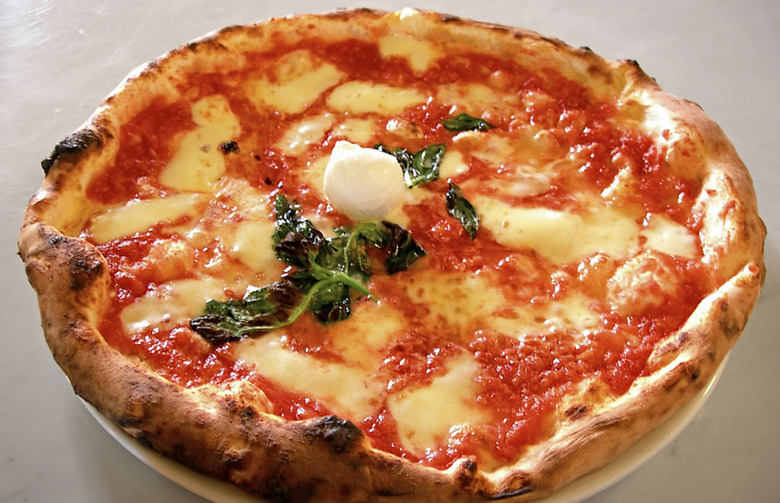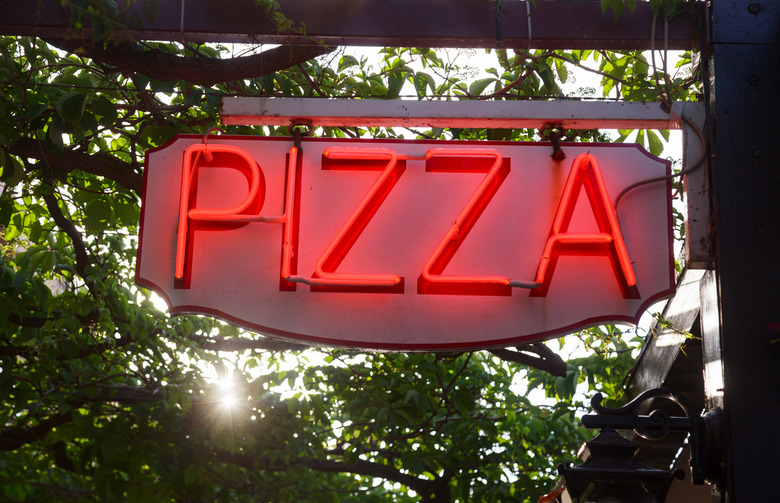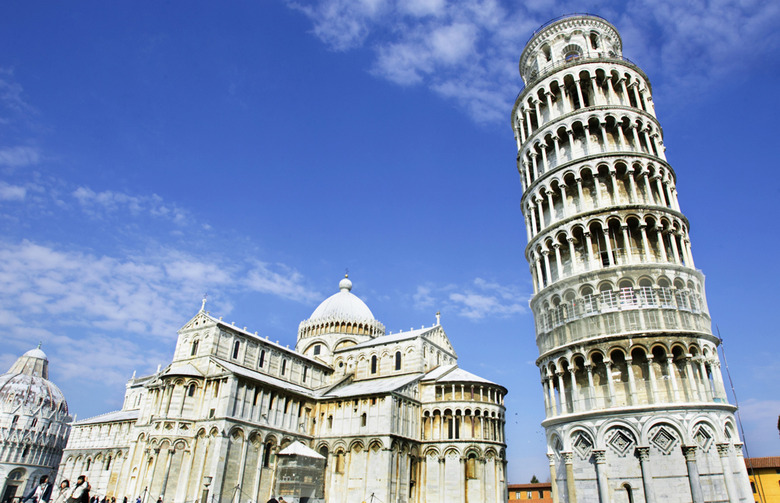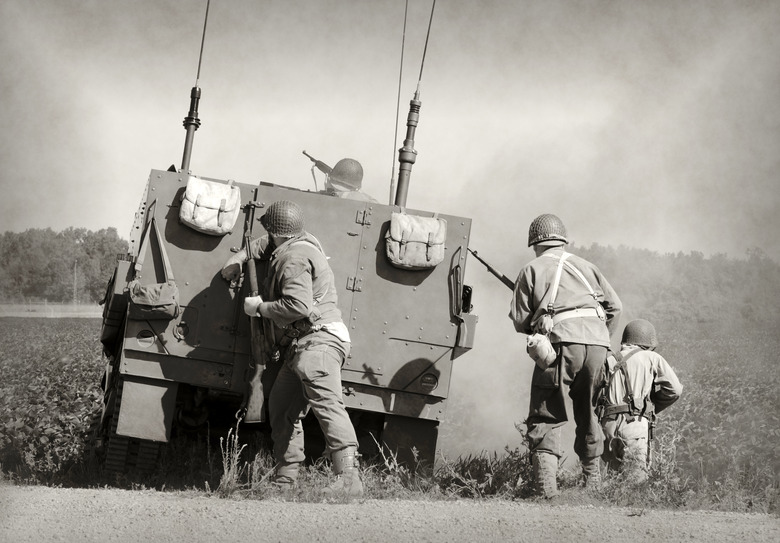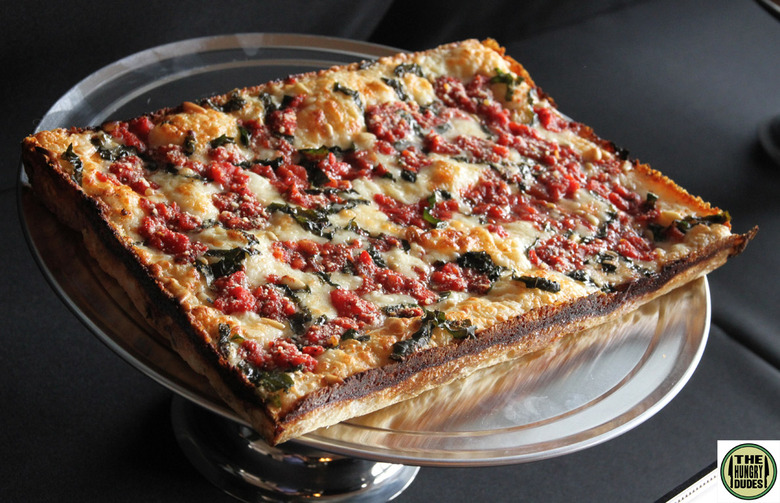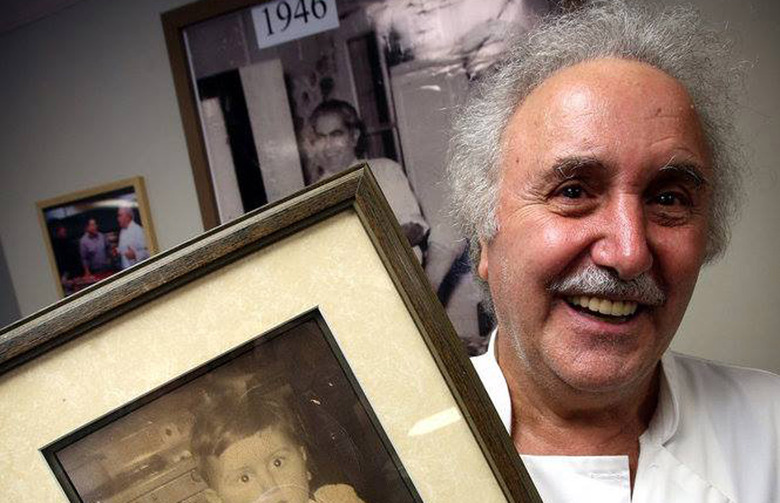10 Things You Didn't Know About Pizza
Ah, pizza. Ask a few people what their favorite food is, and it's bound to come up. Pizza is one of the most popular foods in America, and whether it's from a fast food joint, your supermarket's freezer section, a dollar-slice joint on the streets of New York, or an artisanal pizzeria, it always seems to taste good. But this magical combination of bread, cheese, and sauce didn't come into the world fully-formed, and we bet that there are some things you didn't know about it.
There's an Organization That Verifies ‘True’ Neapolitan Pizza Around the World
Founded in 1984, the Associazione Verace Pizza Nepoletana ("True Neapolitan Pizza Association") has set specific rules that must be followed if a pizzeria is going to call its product authentic Neapolitan: It must be baked in a wood-fired, domed oven; must be made entirely by hand (without the aid of even a rolling pin); must be no more than 35 centimeters in diameter; and can't be more than one-third of a centimeter thick at the middle, among other requirements. Crushed red pepper flakes are optional.
Nobody Knows How the Word Originated
There are a few competing theories for the etymological origin of the word pizza: The Ancient Greek words pikte (for "fermented pastry") and pitta ("bran bread"), the Italian word pizzicare (meaning "to pluck" as in "plucking quickly from the oven"); and the Old High German word pizzo ("mouthful"), brought to Italy in the sixth century by the Lombards.
Tomatoes Weren't Always a Crucial Component
Pizza was around long before European explorers first brought tomatoes back from the New World in the late 1500s, but they eventually made their way onto pizzas and became an essential component of the pies we know today. Nobody knows exactly who the first person was to add tomatoes to pizza, but we should all be very thankful for the development.
The Outer Edge Is Called the Cornicione
If you want to impress your friends, the next time you're eating pizza and somebody leaves the "bones" behind, ask them why they didn't eat the cornicione (say "cor-nee-cho-nay"), which means the cornice or the molding. Don't call it the crust; that's the name for the base that the toppings are added to. And yes, this does mean that Pizza Hut's latest creation should technically be called a hot dog-stuffed cornicione pizza.
You Won't Find Pizza Slices in Italy
Pizzas in Italy tend to only be served whole (the smallish Neapolitan ones, for example) or cut into squares or rectangles from a large tray, called pizza al taglio. The large, round pies you find in New York are an American invention — enlarged versions of Neapolitan pizza. Early New York pizza sellers sold whole pies for around five cents, but for those who couldn't afford a whole pie, the sellers cut them into wedges and sold them for a couple cents apiece, and the New York-style slice was born.
World War II Brought Pizza to the Masses
GIs stationed in Italy during World War II discovered pizza there and couldn't get enough of it. They brought their tastes back to the States, and soon the dish, which before then was limited mostly to Italian neighborhoods, became a national phenomenon. The country's first pizza chain, Shakey's, was founded in Sacramento in 1954.
There Are More Regional Variations Than You May Realize
You're probably familiar with New York and Chicago deep dish pizzas, but what about Detroit pizza, which is square and baked in old industrial parts trays (pictured)? Or New Haven style "apizza," which has a thin, sometimes scorched crust that's slightly chewy? How about St. Louis pizza, which is cracker-thin, square-cut, topped with Provel cheese? The regional varieties go on and on. Set a goal to try them all — it'll certainly be a tasty challenge!
The World's Largest Pizza Was Nearly 123 Feet Across
October Is National Pizza Month
The first National Pizza Month was observed in October 1984. It was the creation of Gerry Durnell, the publisher of a magazine called Pizza Today (we're definitely subscribing).
America's Oldest Continuously Operating Pizzeria is in Trenton, N.J.
While Lombardi's may have been the first pizzeria in America, it closed in 1984 and didn't reopen until 10 years later, in a new location and under new management (although it still doesn't sell slices). Papa's Tomato Pies, which was founded by Giuseppe Papa in 1912 on South Clinton Avenue in Trenton, New Jersey, has operated continuously since opening day and is still owned and operated by the Papa family.

